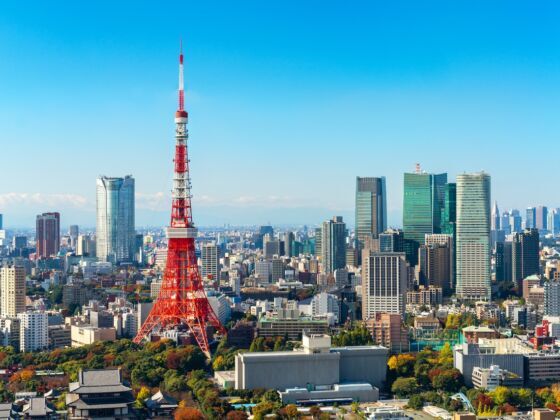TOKYO IS AN INTERESTING PLACE. A giant, interesting place. If you’ve ever been, you’ve noticed how vastly each of Tokyo’s wards differs from the next. From Shibuya’s neon lights to Taito’s traditional temples to Sumida’s Ryogoku Kokugikan (Tokyo’s most important sumo arena), there is no shortage of excitement to be found in the city. And if none of that does it for you, well, there are 20 other wards in Tokyo that might. There’s no way you’ll be able to cover them all during your two-week vacation. On the plus side, Tokyo always gives you a reason to come back.


20 Things You Might Not Know About Tokyo
If you think you know everything you’ve ever needed to know about the city, think again. Here are 20 things that might surprise you about the colorful city known as Tokyo.
1. At over 5,000 square miles, the Greater Tokyo Area is the second largest metropolitan area on the planet in terms of urban landmass. In terms of population, it comes in at #1.
2. Founded as Edo once upon a time (in the 12th century), Tokyo’s literal translation means “East(ern) capital.”
3. Tokyo was originally set to host the Summer Olympic Games in 1940, but the privilege ended up being awarded to Helsinki before the games were cancelled due to World War II.
4. Tokyo Disneyland was Disney’s first park outside the US. The resort employs over 20,000 people.
5. As the annual Cherry Blossom Festival nears, television and radio reports include information on the “cherry blossom front” (sakura zensen), or the advance of the cherry blossoms across the different regions of Japan.
6. The Eiffel Tower was the inspiration for the Tokyo Tower. The tower is repainted every five years, a process that takes 12 months each time.
7. Oshiya, or “pushers,” are employed in some of Tokyo’s railway stations. These station attendants literally push people onto crowded trains during rush hour.
8. The longest concert ever held at the Tokyo Dome was Guns N’ Roses. On December 18 of 2009, they played for three hours and 37 minutes.
9. Tokyo’s Imperial Palace is generally closed to the public (the Imperial Household Agency and the East Gardens are accessible), except on the Emperor’s birthday and New Year.
10. Hara Takashi, the 19th Prime Minister of Japan, was assassinated by a right-wing railway switchman. His killer only spent 13 years in prison before being released.
11. While used-panty vending machines are not actually on every corner, as pop culture might have you believe, vending machines selling peculiar items can be found around Tokyo, including canned bread, cigarettes, and fresh eggs.
12. With an average of 3.64 million people passing through daily, Shinjuku Station is the world’s busiest rail station, according to the Guinness World Records. The streets of this district see their fair share of traffic as well.
13. Capsule hotels (hotels that contain rooms roughly the size of a large refrigerator) can be found around Tokyo. Most rooms include televisions, wifi, and an electronic console. The accommodations are primarily used by men.
14. Five million pounds of seafood, worth roughly 28 million USD, are sold daily at Tsukiji Fish Market (a complex that covers 57 acres).
15. Despite its popularity as a worldwide landmark and part of Tokyo’s backdrop, Mount Fuji is actually visible fewer than 180 days per year due to clouds and Tokyo’s air dust concentration.
16. Traditional Tokyo-style ramen includes thin, curly noodles in a soy-flavored chicken broth. The typical toppings are chopped scallion, sliced pork, menma, egg, nori, spinach, and kamaboko.
17. Some people believe in the “Curse of Roppongi Hills,” after a series of unfortunate events at this Tokyo development, said to include at least one death and the prosecution of several executives that worked in the building.
18. In 1962, Tokyo became the first city in history to record a population greater than10 million, making it the largest city in the world at the time.
19. Yakitori, grilled chicken, can be found all over Tokyo. The skewered meat comes in over 10 different versions, ranging from momo (chicken thigh) to shiro (chicken small intestines).
20. Tokyo contains over 100 universities and colleges, giving it the world’s highest concentration of higher learning institutions. One-third of Japan’s university students attend school in Tokyo.